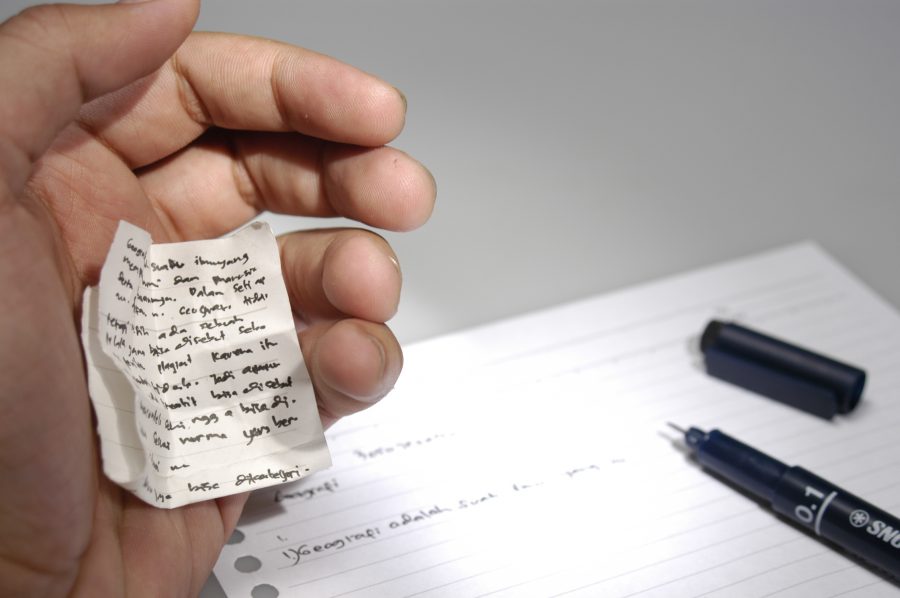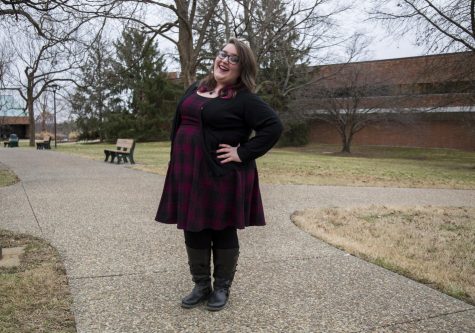Academic Dishonesty
Faculty and staff discuss the importance of following the Code of Students Rights, Responsibilities and Conduct
February 6, 2017
The world of a college student is filled with studying for tests, homework and term papers. The constant stream of work and the never-ending demand that is put on students during each semester can become overwhelming.
It is often during times of high stress that college students turn to other means to have something to submit when deadlines approach, or to make sure they make the grade.
It is frequently during these times the matter of academic dishonesty rears its head.
Academic dishonesty typically brings to mind simply cheating on a test. Although cheating on a test is, in fact, a form of academic dishonesty, it is only one of many.
IU Southeast defines academic dishonesty and academic misconduct as:
- Cheating
- Fabrication
- Plagiarism: A student must not adopt or reproduce ideas, opinions, statements, etc. of another person without appropriate acknowledgment.
- Interference: A student must not steal, change, destroy or impede another student’s work.
- Violation of course rules
- Facilitating academic dishonesty
When a case of academic dishonesty arises, faculty and staff at IU Southeast often deal with academic dishonesty firsthand to determine whether or not a deeper course of action is needed.
When a course of action is needed, the steps that are taken are represented in an accessible and easy-to-read flow chart, which is available online to all IU Southeast students. The in-depth process is also available to all IU Southeast students.
The first thing to happen when a faculty member reports the act, is a written warning being drawn up. This is after all students are re-reminded in each syllabus about the “Code of Student Rights, Responsibilities and Conduct.”
The written report then heads to a conduct officer, who determines what steps are necessary. The two options from there are a conduct conference with the student having the report sent to a hearing committee. From each of these options, the student can repeal the claim.
The consequences for academic dishonesty are laid out in the in-depth version as well.
So, now knowing that the spectrum of academic dishonesty covers much more than cheating on a test, how commonplace is it really?
According to The International Center for Academic Integrity, 68 percent of the 71,300 undergraduate students that reported for the survey admitted to cheating on both test and written assignments.
.April Robinson, lecturer in mathematics at IU Southeast, said that, even as a math teacher, she encounters academic dishonesty every semester.
“For me it is students ‘cheating’ on their MyMathLab homework. They are finding ways to get it done without actually learning how to do it,” she said. “They think if you don’t get caught, that it’s okay to cheat.”
As a teacher at IU Southeast, Robinson hands out a syllabus every semester. The syllabus includes the personal student code of conduct that students are asked to sign.
While she is required to include this in her syllabus, she does not believe that this has any impact on curtailing the academic dishonesty trend she sees every semester in her classes. Although she said she does not think there has been an uptick of cheating over the last four semesters in her classes, she said she feels it has remained the about the same.
Robinson said that, to her students, plagiarizing and earning a grade for themselves with someone else’s work is considered to be the worst.
Seuth Chaleunphonh, dean of student life at IU Southeast, said plagiarism is the most common form of academic dishonesty that occurs at IU Southeast. When it comes to students at IU Southeast, he doesn’t feel signing the code of conduct helps to keep academic dishonesty from happening, but that it is necessary nonetheless.
“Signing to acknowledge that they know the policy only eliminates the ‘I didn’t know excuse’ that instructors probably have heard too often from students,” he said. “Note, many faculty also offer help to students to learn skills to study for tests and to properly cite works of others.”
According to statistics obtained by Chaleunphonh, the trends surrounding academic dishonesty have remained relatively the same.
In 2016, the total number of people turned in for plagiarism was 17. That is up four from 2015, but down three from 2014.
In 2014, the total number of people turned in for cheating was 16. It has gone down since then, going to eight in 2015 and 10 in 2016.
Chaleunphonh said most students at IU Southeast feel regret about committing academic dishonesty, but mostly for taking, what seems like, the easy way out.
“Many students admit feeling regret for taking a shortcut such as not properly citing their work or not doing enough research due to time constraints,” he said. “The most disappointing cases are when seniors commit plagiarism who should know better. Also, in cases where entire papers are plagiarized or copies of exams are used for cheating, the student does not get the benefit of the doubt too often.”
Mark Kinkle, associate professor and respiratory program chair/director at Ivy Tech Community College in Sellersburg, said over a four-semester period in his program, he rarely has any cases.
“It appears to have remained relatively unchanged with the student population I interact with,” he said. “Over of the 16-month length of the technical portion of the program, there is typically one case.”
Kinkle also said the academic dishonesty he has encountered has more to do with not being prepared.
“The relationship appears to be related to a student’s preparedness to successfully complete the assignment or exam,” he said. “If it is a last minute attempt at completion (written assignment) or an exam that they didn’t prepare adequately for, that appears to be related to instances of academic dishonesty.”
Kinkle said his students most often fail to cite their sources, either adequately or at all, in his written assignments. This leads to, what he has found, the most common misconception his students have about academic dishonesty. The lack of understanding about what actually needs a source and how to correctly cite a source often leads to students unwittingly plagiarizing.
Kinkle agrees with both Robinson and Chaleunphonh that the syllabus signing does not do much to help the issue, but that it is still needed.
“It is necessary to curtail the ‘I didn’t know’ aftermath from students once caught,” he said. “I include an academic honesty statement with each online exam administered (including face-to-face courses) that students understand that with their submission they acknowledge they haven’t offered assistance or received assistance from others in completing the exam.”
Ivy Tech’s code of conduct similarly mirrors IU Southeast’s. When the rare case does cross his path, Kinkle said he takes the same approach with any given student.
“In cases of blatant plagiarizing (obvious cut and paste, different font size or style from the other parts of the text), they are usually the same as other forms of academic dishonesty- failure of the assignment,” he said. “Regardless of the form of academic dishonesty, students are advised that a second case results in a ‘0’ for the assignment.”
Kinkle said that, to his students, academic dishonesty on written exams is considered to be the worst.
All three agree that, at the end of the day, academic dishonesty affects more than just the offender.
“One of our values at IU Southeast is ‘integrity,’” Chaleunphonh said. “It is something that maintains the character of academia; it also maintains the individual reputation of our alumni when they are employed and are expected to contribute honestly and fairly in whichever field they are fortunate to work, live and serve.”
As the new semester commences and students begin to have their worlds, once again, overtaken with a constant demand of studying and homework, the stress and tension will, once more, start to build. To the stressed out student, academic dishonesty can seem like the easy way out of a situation in the moment, but the consequences and effects are long-lasting.



